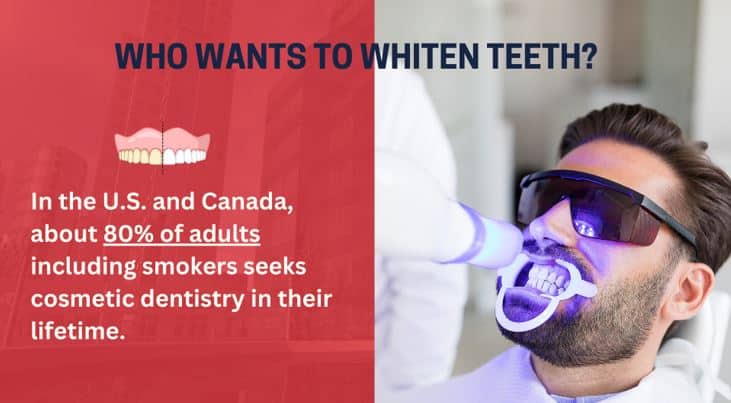 So it’s obvious that many smokers have contributed to the rapid growth of the teeth whitening market, which is estimated to reach $7.17 billion by the end of 2023.
To retain your whitened teeth, you have to take deliberate steps such as avoiding staining substances.
So it’s obvious that many smokers have contributed to the rapid growth of the teeth whitening market, which is estimated to reach $7.17 billion by the end of 2023.
To retain your whitened teeth, you have to take deliberate steps such as avoiding staining substances.
5 Things to Avoid After Teeth Whitening
Smoking isn’t the only thing to avoid after whitening your teeth. Avoid these 5 substances to safeguard your newly whitened teeth, preserve the brightness, and ensure long-lasting results:1. Staining Substances:
Coffee and Red wine, for example, contain intense pigments that can stick to enamel, potentially causing stains. Regular consumption increases the risk, as the pigments latch onto porous enamel, making these beverages primary culprits in compromising the brightness achieved through teeth whitening.2. Tobacco Products:
Smoking introduces teeth to powerful staining substances – nicotine and tar. These compounds, notorious for discoloration, compromise the results of whitening. Many studies from British American Tobacco show that the tar in cigarette smoke is the main culprit for stained teeth.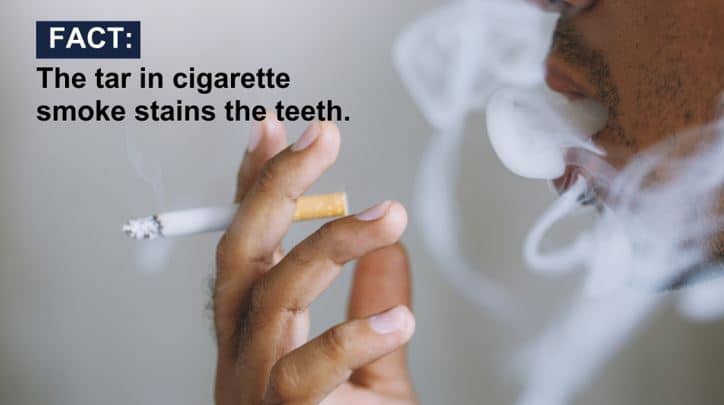 They infiltrate porous enamel, leaving stubborn stains that counteract the brightening effects of the whitening process.
Quitting or minimizing smoking is crucial for preserving a radiant post-whitening smile.
They infiltrate porous enamel, leaving stubborn stains that counteract the brightening effects of the whitening process.
Quitting or minimizing smoking is crucial for preserving a radiant post-whitening smile.
3. Highly Pigmented Foods:
Berries and tomato sauce, vibrant in color and acidity, pose staining risks. The deep hues contain pigments that adhere to enamel, potentially causing stains. The acidity exacerbates the staining process, making these foods significant contributors to discoloration and challenging the maintenance of a whitened smile.4. Acidic Beverages:
Citrus juices and soda, high in acidity, compromise enamel strength. The acid weakens enamel, making it more susceptible to stains. These drinks create an environment conducive to discoloration, intensifying the risk of stains adhering to enamel. Minimizing consumption aids in preserving the integrity of enamel and the success of teeth whitening.5. Dark-Colored Sauces:
Soy sauce and balsamic vinegar, rich in intense coloration, pose enamel-staining challenges.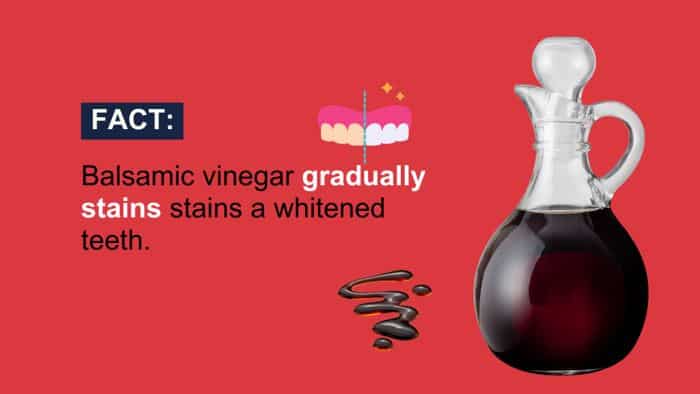 The deep hues in these sauces adhere to enamel, potentially diminishing the whiteness achieved through the whitening process.
Regular consumption increases the risk of persistent stains, emphasizing the need to moderate these sauces for a lasting bright smile.
The deep hues in these sauces adhere to enamel, potentially diminishing the whiteness achieved through the whitening process.
Regular consumption increases the risk of persistent stains, emphasizing the need to moderate these sauces for a lasting bright smile.
Understanding Teeth Whitening: The Basics
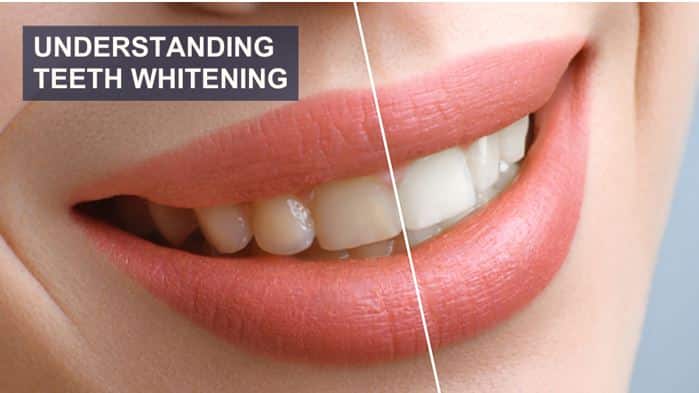 What are the basics of teeth whitening and how do you sustain that sparkle, even if you’re partial to a smoke?
Teeth whitening is a two-step process — first, a gel or solution works its magic, breaking down the stains. Then, a special light or chemical reaction does the heavy lifting, leaving you with a beaming smile.
Now, for the sustain part. If you’re a smoker, you need regular oral hygiene. Brush, floss, and rinse to create a shield against potential staining.
Consider touch-up whitening treatments, like a dental booster shot, to combat the ongoing battle against discoloration.
Bottom line: Teeth whitening may be quick and one-time but oral care is a routine. Together, they keep your smile dazzling, smoke or no smoke.
What are the basics of teeth whitening and how do you sustain that sparkle, even if you’re partial to a smoke?
Teeth whitening is a two-step process — first, a gel or solution works its magic, breaking down the stains. Then, a special light or chemical reaction does the heavy lifting, leaving you with a beaming smile.
Now, for the sustain part. If you’re a smoker, you need regular oral hygiene. Brush, floss, and rinse to create a shield against potential staining.
Consider touch-up whitening treatments, like a dental booster shot, to combat the ongoing battle against discoloration.
Bottom line: Teeth whitening may be quick and one-time but oral care is a routine. Together, they keep your smile dazzling, smoke or no smoke.
What are the Immediate Effects of Smoking on Whitened Teeth?
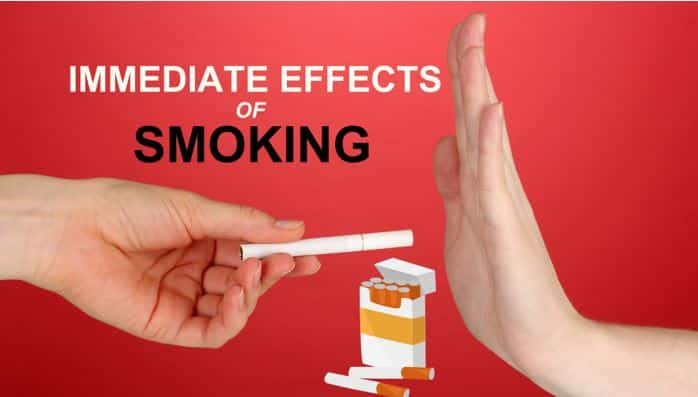 After smoking on whitened teeth, here are the immediate effects to expect:
After smoking on whitened teeth, here are the immediate effects to expect:
1. Nicotine Invasion:
Nicotine can stain teeth fairly quickly, often within days to weeks of consistent exposure. The porous nature of enamel allows nicotine to penetrate, leading to yellow or brown discoloration. The intensity of staining depends on factors like the frequency of nicotine exposure, individual oral hygiene, and genetic predispositions. Regular dental care, timely cleanings, and minimizing nicotine exposure can help mitigate the speed and severity of staining.2. Stubborn Tar:
Stubborn tar, found in cigarette smoke, poses a persistent threat to whitened teeth. When you smoke after teeth whitening, tar compounds adhere to porous enamel, counteracting the brightening effects. This stubborn substance embeds itself, forming unsightly stains that are challenging to remove. The heat from smoking exacerbates the staining process, making the immediate impact of tar on your recently whitened teeth a formidable adversary to the desired radiant smile. Regular oral care and avoiding smoking are key to preventing and addressing the adverse effects of stubborn tar on teeth.3. Heat Acceleration:
Smoking heat acts as a catalyst for teeth staining after whitening. The elevated temperature increases the reactivity of staining compounds, such as nicotine and tar, allowing them to more efficiently penetrate the porous enamel. This acceleration intensifies the immediate staining effect, undermining the success of the whitening process. The heat from smoking compounds the challenge of maintaining a bright, stain-free smile, making it crucial to minimize smoking post-whitening for optimal results.4. Plaque:
Smoking turns plaque into a staining ally, making discoloration more stubborn. The chemicals in cigarette smoke alter the composition of plaque, turning it into a more adhesive and staining-prone substance. This alliance makes discoloration more resilient, complicating the removal process and emphasizing the detrimental impact of smoking on the post-whitening vibrancy of teeth.5. Oxidative Stress:
Cigarette chemicals and oxygen come together to induce oxidative stress on teeth. This partnership triggers a reaction that leads to yellower teeth. The oxidative stress accelerates discoloration, adding an unwelcome hue to the enamel. This process underscores the role of smoking in undermining the whiteness achieved through teeth-whitening procedures.6. Saliva Overwhelmed:
Smoking overwhelms natural defenses, particularly saliva, leaving teeth defenseless against staining forces. The chemicals in cigarette smoke disrupt saliva’s protective functions, allowing staining agents like nicotine and tar to penetrate enamel more easily. This vulnerability heightens the risk of persistent staining, compromising the effectiveness of teeth whitening efforts.The Long-term Effect of Smoking on Whitening Teeth
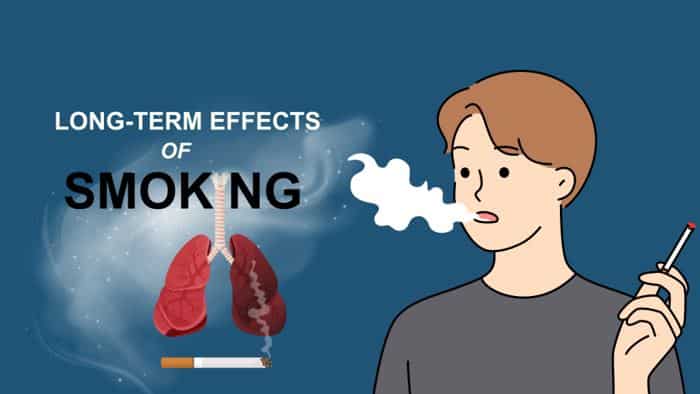 Smoking, over the long haul, becomes a persistent adversary to your gleaming, whitened teeth.
Beyond immediate staining, it sets the stage for a gradual takeover. According to Dr. Brite, “Smoking damages the inner part of the teeth.”
The cumulative effect of smoking results in persistent discoloration, overshadowing the initial brilliance of your whitened smile.
This ongoing habit compromises the integrity of your dental work and can undermine the lasting impact of the teeth-whitening procedure.
In essence, smoking has long-term negative effects; gradually diminishing the radiance of your teeth despite the initial whitening efforts.
Smoking, over the long haul, becomes a persistent adversary to your gleaming, whitened teeth.
Beyond immediate staining, it sets the stage for a gradual takeover. According to Dr. Brite, “Smoking damages the inner part of the teeth.”
The cumulative effect of smoking results in persistent discoloration, overshadowing the initial brilliance of your whitened smile.
This ongoing habit compromises the integrity of your dental work and can undermine the lasting impact of the teeth-whitening procedure.
In essence, smoking has long-term negative effects; gradually diminishing the radiance of your teeth despite the initial whitening efforts.
How to Maintain Whitened Teeth Despite Smoking
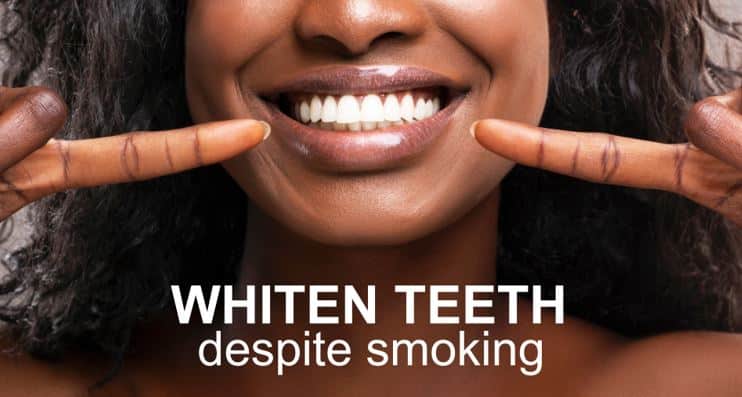 Here are some simple tips to ensure your whitened teeth continue to sparkle while you’re working on quitting smoking:
Here are some simple tips to ensure your whitened teeth continue to sparkle while you’re working on quitting smoking:
- Oral Hygiene Routine: Brush, floss, and rinse regularly to create a protective shield against potential staining.
- Moderation is Key: If quitting smoking isn’t on the immediate horizon, consider cutting down to minimize the impact.
- Hydration Habit: Water is your ally; swish and sip to wash away potential staining agents.
- Professional Check-ins: Schedule regular dental visits for cleanings and check-ups to address stains promptly.
- Whitening Toothpaste: Incorporate a whitening toothpaste into your routine to counteract staining.
- Balanced Diet: Opt for foods that promote oral health, contributing to a brighter smile.
- Touch-Up Treatments: Periodic touch-up whitening treatments can combat ongoing discoloration.